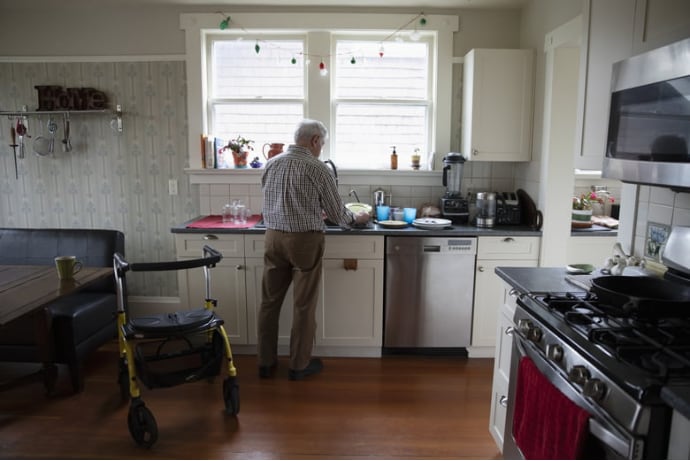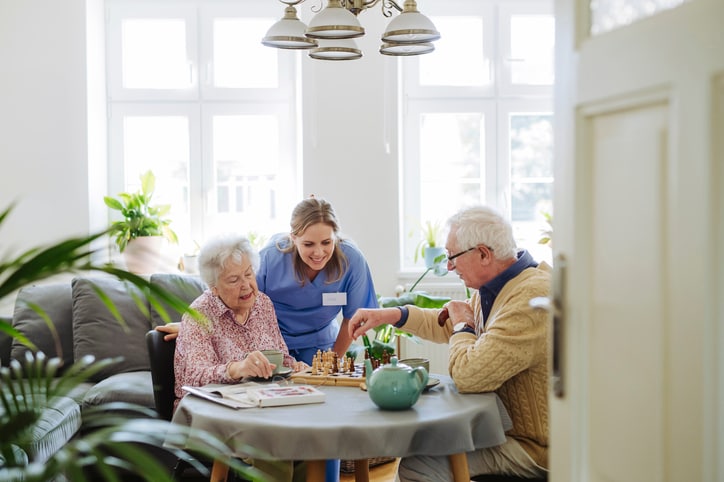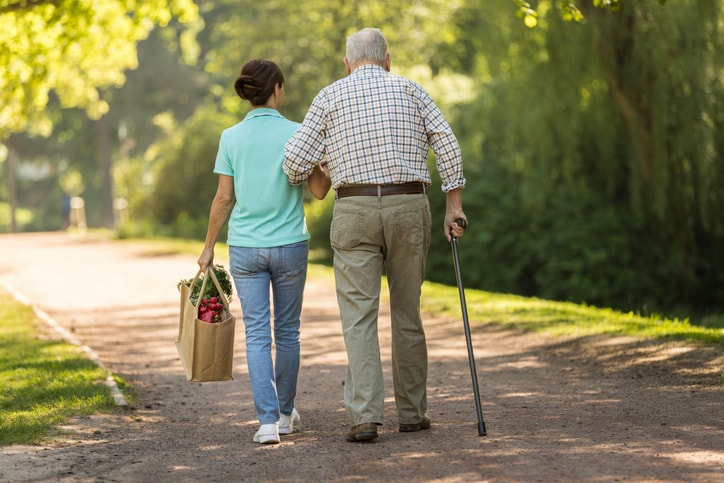By Marisa Cohen
Enjoying post-retirement in the home you raised your children in — or in the comfy condo you bought when the kids flew the coop — is the dream for many seniors. But age brings physical and cognitive changes that can make staying at home a challenge: Eyesight falters, mobility becomes more difficult and memory begins to lapse. All of a sudden, that familiar house can be full of dangers. That’s why it’s critical to perform a home safety assessment, either by yourself or with the help of a professional.
Often, the safety assessment follows a moment of crisis: If there’s a fall or illness, the rehab center or hospital will send an occupational therapist (OT) to recommend changes to the home before the patient is released. But other times, the challenges sneak up more gradually, says Mahlon Stewart, a geriatric clinical specialist and assistant professor of rehabilitation and regenerative medicine at Columbia University Irving Medical Center in New York.
“By the time you notice the loved one is having trouble, there may have already been significant cognitive and physical decline,” he says.
So instead of waiting for an accident to happen, take the time now to make sure your loved one’s home is a safe haven. To start, imagine yourself with the physical or cognitive challenges of your loved one — poor vision, difficulty with stairs, use of a walker, memory lapses — and walk through the front door, suggests Wendy Wells-Chanampa, a dementia care expert and founder of Senior Resource Consultants, in Naples, Florida. Take note of any concerns as you walk through the home.
Experts recommend doing the following at a minimum:
- Declutter pathways
Everyday items can quickly become hazards if your loved one trips on them while walking to the bathroom in the middle of the night, or even just walking down the hallway to the kitchen. Getting rid of these piles is essential, but it can also be emotional, because many seniors feel attached to all the “stuff” in their home, says Stewart, who recommends bringing in outside help to declutter. Things to look for when decluttering include:
- Potted plants
- Piles of shoes and boots
- Laundry baskets
- Newspapers
- Remove rugs and other tripping hazards
“When assessing a home, the number one concern is to prevent falls, which are the leading cause of fatal injury in Americans over 65,” says Amanda Lambert, a geriatric care manager in Salt Lake City, Utah, and co-author of “Aging with Care: Your Guide to Hiring and Managing Caregivers at Home.” Throw rugs and area rugs can bunch up or the corners can flip over, creating a true danger zone — be sure to tape or tack them down, or get rid of them altogether. Aside from rugs, you should also check for:
- Any thresholds that need to be stepped over
- Footrests and ottomans that can get in the way
- Slippery stairs that need to be covered with non-skid treads
- Make the bathroom more accessible
The bathroom can be the most dangerous room in the house. Can the shower be accessed without stepping over the high side of a bathtub? Is there a sturdy grab bar to get up and down from the toilet, and into the shower?
“Many people just use the towel rack to hold onto, but they’re designed to hold a few pounds of towels, not 150 pounds of a person,” says Stewart, who points out that they will likely come crashing down if grabbed onto during a fall. “If you’re handy, you can install a grab bar yourself, but if not, you might want to hire someone to do it.”
- Check kitchen for hazards
If your loved one will still be preparing his or her own meals (an aide who cooks or a food-delivery service are other options), make sure the kitchen is as safe as possible. Some adjustments may include:
- Moving frequently used pots, pans, utensils and groceries to lower shelves where they are easily accessible.
- Making sure faucets are clearly marked for hot and cold and installing anti-scald devices.
- Checking that burners and oven are working properly and have timers that beep loudly.
- Buying and upgrading to a new microwave, as microwaving is safer and easier than cooking with an open flame (and you can fill the freezer with prepared meals that just need to be zapped).
- Improve lighting
All pathways should be well-lit, especially the route to the bathroom at night, says Stewart. In addition to all rooms, other areas to check for lighting include any outside areas such as the garage and driveway, near all doors as well as in the hallways and entryways. Inexpensive nightlights placed around the house can be a big help.
- Purchase safety devices
Not only should the home have working smoke detectors and carbon monoxide detectors, but you should also assess whether your senior relative needs a personal fall detection device and a chair lift on the stairs, says Lambert.
If you feel confident doing the assessment and making necessary modifications on your own, that’s fine, say the experts. But if you want to take it a step further and hire a professional such as an occupational therapist (OT) or physical therapist (PT) to help, you can contact your Area Agency on Aging for referrals and resources, or if you believe there are larger changes that need to be made, consider hiring a Certified Aging in Place Specialist (CAPS) through the directory page of the National Association of Home Builders. You can also consult your Senior Care Advisor for more safety tips and resources to help your loved one age in place.
For caregiving support, information and resources contact a Senior Care Advisor at Care.com. We are master’s-level social workers specializing in adult and senior care. Call us today at (855) 781-1303 x3 or email questions to careplanning@care.com






